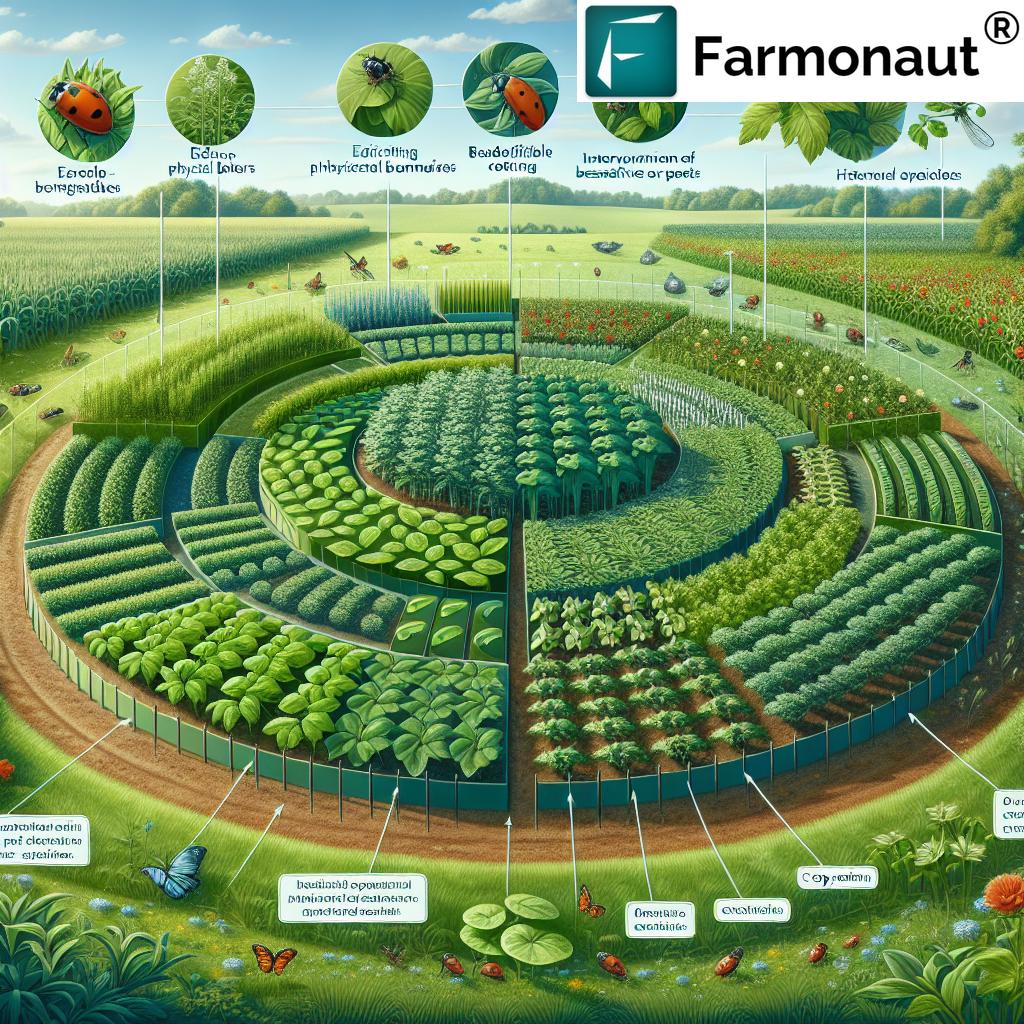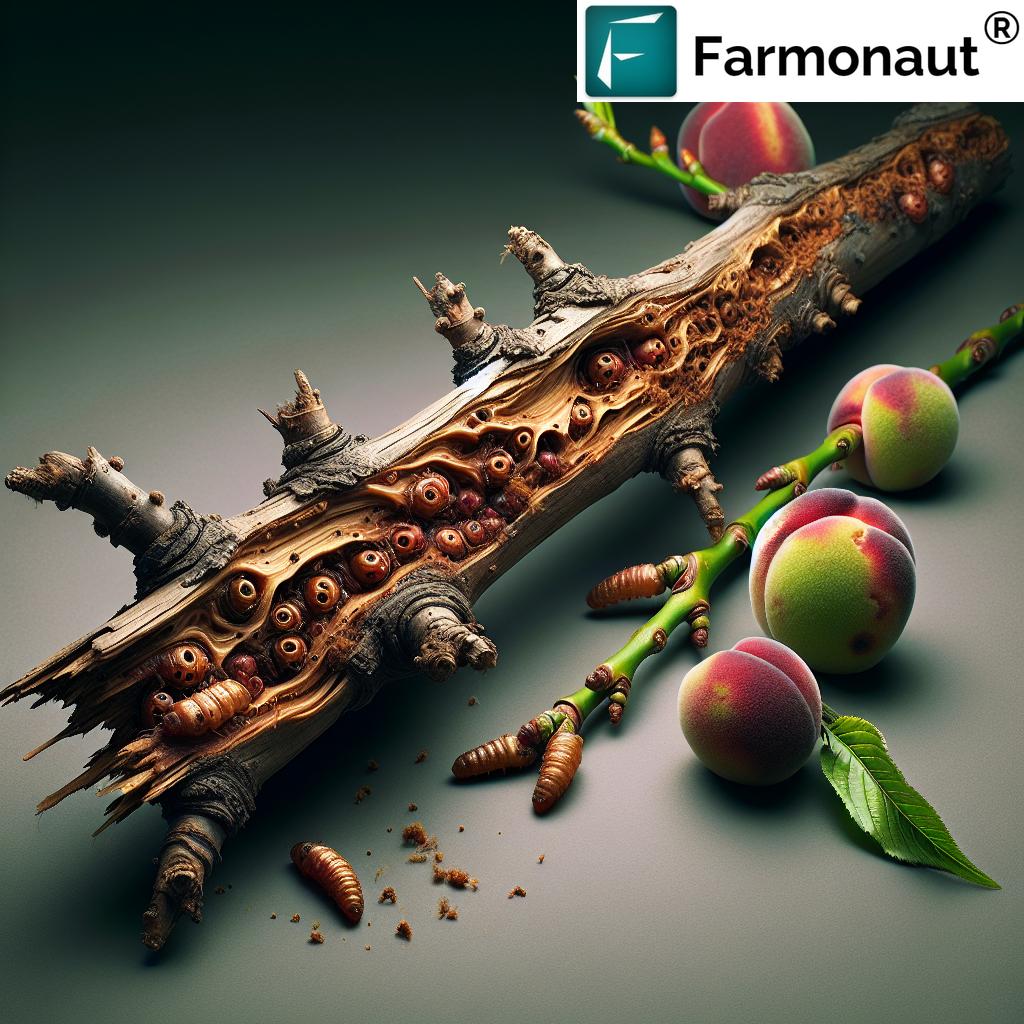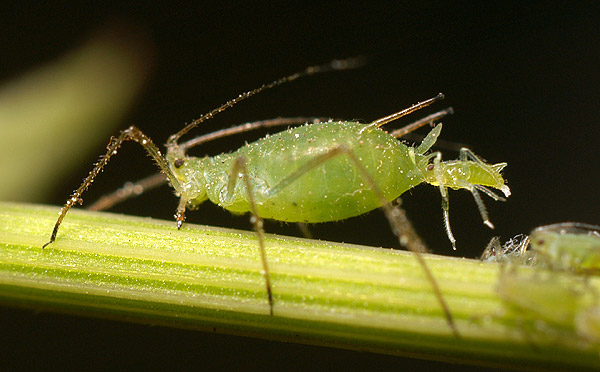Crop Protection: 7 Secret Eco-Hacks to Stop Pests!
“Integrated pest management can reduce pesticide use by up to 50%, promoting healthier crops and ecosystems.”
Understanding Crop Protection
Crop protection is a fundamental aspect of agriculture, farming, and forestry. As we strive to safeguard our plants and crops from a wide range of threats—including harmful pests, diseases, weeds, and environmental stresses—our key goal is to implement sustainable practices that ensure optimal crop growth, maximize yields, and maintain the delicate ecological balance of our farming environments.
But what exactly does crop protection involve? At its core, crop protection encompasses a range of integrated pest management strategies, biological control agents, chemical pest control approaches, cultural practices, and other methods designed to prevent or mitigate damage from harmful organisms. These are not limited to insects alone; diseases, weeds, fungi, viruses, and even certain environmental stresses can adversely affect plant health, reducing the potential for robust yields and affecting food security.
Why focus on sustainability? We recognize that while traditional methods like widespread chemical pesticide use can offer short-term relief, they often come with long-term risks—such as environmental contamination, pesticide resistance, and harm to beneficial species. That’s why the drive towards sustainable pest control using eco-hacks like integrated pest management, biological controls, and cultural practices is more important than ever.
Key Principles of Modern Crop Protection:
- Sustainability: Minimizing environmental impact, preserving beneficial organisms, and ensuring long-term viability.
- Effectiveness: Using strategies that are proven to control pests, diseases, and weeds efficiently.
- Integration: Combining different methods in a balanced system (the essence of integrated pest management).
- Adaptability: Adjusting methods based on monitoring, pest population levels, and emerging challenges.
As we explore the 7 secret eco-hacks for sustainable crop protection, we’ll see how integrated pest management, biological control in agriculture, optimized cultural practices, and cutting-edge data technologies are revolutionizing how we manage, prevent, and mitigate crop losses due to pests and diseases.
The 7 Secret Eco-Hacks for Sustainable Crop Protection
Let’s delve into the seven most effective and sustainable crop protection hacks, blending timeless agricultural wisdom with modern innovations.
1. Integrated Pest Management (IPM): The Cornerstone Approach
At the heart of sustainable crop protection lies Integrated Pest Management (IPM)—a holistic, environmentally sound framework that incorporates multiple pest management strategies to keep pest populations at acceptable levels while minimizing reliance on chemical pesticides. IPM integrates:
- Monitoring & Identification: Regularly inspecting and assessing pest levels to identify harmful organisms before they cause significant damage.
- Action Thresholds: Setting economic injury levels and determining when action is actually necessary, rather than reacting to every pest sighting.
- Preventive Cultural Practices: Employing crop rotation, optimizing planting schedules, and selecting resistant plant varieties to make crops less favorable for pests.
- Biological Control: Encouraging or supplying natural predators and beneficial organisms to control pest populations.
- Judicious Chemical Use: Resorting to pesticides only when essential, and choosing products with minimal risk to beneficial species and the environment.
IPM’s strength lies in its adaptability—for both smallholder and large-scale agriculture—making it a pivotal tool for maintaining the ecological balance in farming and forestry systems worldwide.
“Biological control methods can decrease pest populations by 80% without harming beneficial insects or the environment.”
2. Biological Control in Agriculture: Embracing Nature’s Allies
A game-changer in sustainable pest management strategies, biological control leverages natural enemies of pests—including predators, parasites, and pathogens—to help keep harmful populations in check. By prioritizing ecological solutions, we prevent long-term resistance and reduce off-target impacts of chemical pest control. Key biological control agents include:
- Predatory Mites: Tiny yet voracious allies, these mites feed on spider mites, thrips, and whiteflies, reducing infestations without harming plants or humans.
- Beneficial Nematodes: Microscopic warriors that attack pest larvae in the soil, offering reliable, subterranean pest protection.
- Parasitic Wasps: Specialists that lay their eggs in or on harmful pests, with emerging larvae disrupting pest life cycles.
- Predatory Insects: Insects such as lady beetles and lacewings, which actively consume large numbers of aphids, mealybugs, and other soft-bodied pests.
- Microbial Agents: Beneficial bacteria and fungi (e.g., Bacillus thuringiensis and Trichoderma) which specifically target insect larvae or plant pathogens, controlling diseases naturally.
By utilizing these natural pest control methods, we not only safeguard our plants but also foster an environment in which pest populations are less likely to spiral out of control.
3. Cultural Practices in Crop Protection: Farming Wisdom Reimagined
Cultural control practices are among the oldest and most effective techniques to reduce the impact of pests, diseases, and weeds. They involve smart, preventive measures designed to make the environment less inviting for unwanted organisms. A few powerful examples include:
- Crop Rotation: Interrupting pest and disease life cycles by not growing the same crop in the same field year after year.
- Planting Resistant Varieties: Selecting crop varieties specifically bred for tolerance or resistance to certain pests and diseases.
- Optimizing Planting Schedules: Timing sowing and harvesting to avoid peak pest populations or disease infection windows.
- Tillage Practices: Using tillage to disrupt pest habitats or expose pests to predators and environmental stresses; or adopting minimal tillage to preserve beneficial soil organisms.
- Weed Management: Regularly removing weeds which compete with crops, harbor pests, and facilitate disease spread.
When we integrate these cultural practices into our regular routines, we not only reduce the reliance on chemical pest control but also promote soil health, optimize yields, and help maintain ecological balance in our farming systems.
4. Non-Pesticidal Pest Management: Harnessing Eco-Friendly Solutions
Increasingly, sustainable agriculture demands we reduce or eliminate synthetic chemicals in favor of natural pest control methods and non-pesticidal management. These methods aim to restore the natural balance of our cropping systems and prevent populations of harmful organisms from reaching damaging levels. Key strategies include:
- Introduction of Natural Predators: Releasing beneficial insects or mites into the field to hunt pests.
- Use of Natural Extracts: Employing botanicals like neem oil, garlic extract, or citrus oil as bio-pesticides that deter pests without causing harm to humans, beneficial insects, or the environment.
- Trap Cropping: Planting more attractive crops near the main crop to lure pests away, enabling easy removal or targeted control.
- Field Sanitation: Removing crop debris and weeds that can provide shelter for pests and allow disease carryover.
- Timely Sowing: Adjusting planting times to outmaneuver pest emergence or disease cycles.
Natural, non-chemical approaches are essential for organic growers and highly recommended for all sustainable crop systems, helping us move toward long-term resilience.
5. Chemical Pest Control: Precision and Responsible Use
While our primary goal is to minimize synthetic chemical use, there are scenarios where chemical pest control is necessary to prevent economic damage. The challenge is judicious, responsible, and data-driven application of pesticides to manage target pest populations effectively while protecting beneficial species, soils, and water resources.
Key Principles for Chemical Pest Control:
- Monitoring & Threshold-Based Application: Apply pesticides only when pest populations surpass pre-set economic thresholds, preventing unnecessary use.
- Selection of Targeted Products: Use pesticides that specifically affect the intended pest, minimizing impacts on non-target organisms.
- Rotation of Chemical Classes: Alternate active ingredients to prevent or delay pesticide resistance.
- Risk Mitigation: Use protective equipment, follow label instructions meticulously, and minimize environmental runoff by avoiding applications before rain or on windy days.
By pairing chemical control with effective monitoring and other eco-hacks, we can prevent resistance, reduce human health risks, and sustain yields—all vital for global food security.
6. Digital Monitoring and Precision Agriculture
Modern pest management strategies are increasingly data-driven, leveraging real-time monitoring and satellite-based technologies to track crop health, weed management, and detect early signs of infestation or disease. Digital systems like Farmonaut’s platform integrate:
- Satellite Imagery: Multispectral images detect changes in vegetation and soil moisture, signaling pest population spikes or disease establishment.
- AI-Based Advisory: Personalized insights, weather forecasts, and best practices to help us implement timely and targeted interventions.
- Blockchain Traceability: Ensuring eco-friendly products and safe, verified supply chains—from farm to consumer.
- Resource Optimization: Guided management of irrigation, fertilizer, pesticides, and labor—cutting input waste and environmental impact.
These tools maximize yields, minimize environmental impact, and help maintain ecological balance, all while making sustainable crop protection affordable and accessible to farmers of all scales.
Looking to automate processes or build solutions? Explore the Farmonaut API – access satellite, weather, crop and pest management insights right in your apps or business systems. Check out the API Developer Docs for easy integration.
7. Regulatory Frameworks and International Standards
Global pest management and crop protection are governed by rigorous guidelines that help harmonize efforts and prevent the introduction and spread of harmful organisms. One key instrument is the International Plant Protection Convention (IPPC), which informs phytosanitary measures and international trade protocols.
- Implementation of Standards: Countries adopt and enforce International Standards for Phytosanitary Measures (ISPMs) to protect domestic crops and ecosystems.
- Regular Surveillance: Consistent monitoring of pest outbreaks, disease ingress, and pest population levels help maintain thresholds and prevent economic losses.
- Reporting and Cooperation: Efficient information sharing ensures prompt responses to emerging threats to agriculture and forestry.
Compliance with these frameworks is essential for sustainable pest and plant disease management, enabling us to trade globally and protect biodiversity.
Eco-Friendly Crop Protection Methods: Comparison and Impact
| Method | How It Works | Estimated Pest Reduction (%) | Environmental Impact | Sustainability Score (1-5) |
|---|---|---|---|---|
| Integrated Pest Management (IPM) | Combines monitoring, thresholds, preventive cultivation, biological, and chemical controls. | Up to 75% | Low | 5 |
| Biological Control | Uses beneficial predators, parasites, and microbes to naturally suppress pest populations. | 60-80% | Very Low | 5 |
| Cultural Practices | Crop rotation, resistant varieties, optimized planting, tillage, and weed management. | 30-60% | Very Low | 4.5 |
| Non-Pesticidal Management | Natural extracts, trap crops, field sanitation, and predator introduction. | 40-70% | Very Low | 5 |
| Chemical Pest Control | Synthetic pesticides applied based on thresholds and pest population monitoring. | 90% (short-term) | Moderate-High | 3 |
| Digital & Precision Agriculture | Satellites, AI, and real-time data for detecting threats and optimizing interventions. | Varies (enables all above methods) | Low | 4.5 |
| Regulatory/International Standards | Global coordination and standards improve monitoring and cross-border pest control. | Indirect | Very Low | 4 |
“Biological control methods can decrease pest populations by 80% without harming beneficial insects or the environment.”
Farmonaut: Smart, Sustainable Agriculture Solutions
At Farmonaut, our mission is to revolutionize sustainable crop protection by empowering farmers, agribusinesses, and institutions worldwide with affordable, accessible, data-driven solutions. Through advanced satellite imagery, AI, and blockchain innovation, we enable precision agriculture—optimizing inputs, controlling pest populations, and maximizing yields—while minimizing environmental impact.
- Satellite-Based Crop Health Monitoring: Our app offers multispectral NDVI imagery to monitor plant health, assess pest and disease risks, and guide tailored interventions that safeguard crops against threats.
- Jeevn AI Advisory: Experience real-time, expert pest management strategies personalized to your field—helping you act quickly and effectively with data-backed decisions.
- Blockchain-Based Traceability: Build supply chain transparency and consumer trust with end-to-end verification of crop protection practices, input use, and sustainability credentials.
- Fleet & Resource Management: Streamline field operations, logistics, and input application for large or distributed farm enterprises—learn more about our fleet management tools.
- Carbon Footprinting: Track your environmental impact, set carbon reduction targets, and make measurable progress toward sustainability with Farmonaut’s carbon footprint module.
Scalable. Affordable. Accessible—worldwide
Get started with precision farming through our web, iOS, and Android apps—or integrate our insights into your agri-data platforms via flexible API access.
For large scale plantation, agroforestry, or cooperative management, try the Agro-Admin App, delivering satellite monitoring capabilities at scale for teams.
Farmonaut is not an online marketplace, farm input seller, or regulatory body. We are your technology partner to smart, sustainable, and productive agriculture for every region and every farmer.
FAQ: Crop Protection & Sustainable Pest Management
1. What is crop protection?
Crop protection is the collection of techniques, measures, and technologies used to safeguard plants from harmful pests, diseases, environmental stresses, and weeds. Effective crop protection ensures optimal growth, maximizes yields, and maintains the ecological balance in agricultural systems.
2. Why is integrated pest management (IPM) important?
Integrated Pest Management (IPM) is crucial because it combines biological, cultural, physical, and chemical pest control strategies, reducing reliance on pesticides. It helps maintain pest populations at acceptable levels economically and ecologically, protecting beneficial species and minimizing environmental harm.
3. How do biological control agents work?
Biological control agents are natural predators, parasites, or pathogens released to suppress pest populations. Examples include predatory mites, parasitic wasps, and beneficial fungi or bacteria that specifically target and reduce harmful insect populations without adverse effects on the environment.
4. Can digital technologies help with pest management?
Absolutely! Satellite monitoring, AI-powered advisories, and blockchain-based traceability significantly improve pest detection, prediction, and control. Real-time data enables timely interventions, optimal input use, and enhances sustainable farming practices.
5. What role do regulatory frameworks play in crop protection?
Regulatory frameworks such as the International Plant Protection Convention (IPPC) and International Standards for Phytosanitary Measures establish consistent guidelines for pest risk assessment and biosecurity, helping countries coordinate action against cross-border threats and ensure global food safety.
Conclusion: Embracing Sustainable Crop Protection for the Future
Sustainable crop protection is the gateway to a more resilient, productive, and environmentally sound future for agriculture, farming, and forestry. By integrating IPM, biological controls, optimized cultural practices, data-driven monitoring, and responsible chemical use, we can effectively manage pest organisms, prevent plant diseases, and minimize the environmental impact of our agricultural activities.
Farmonaut stands at the forefront of this agricultural revolution—making advanced, affordable, and globally accessible technologies available to every farmer. With smart crop health monitoring, AI advisory systems, blockchain-powered traceability, and robust data integration, we are dedicated to empowering sustainable pest management strategies for all crops, fields, and farm scales.
Join us in reimagining crop protection. Let’s maximize yields, ensure food security, and preserve our planet’s natural balance for generations to come.











